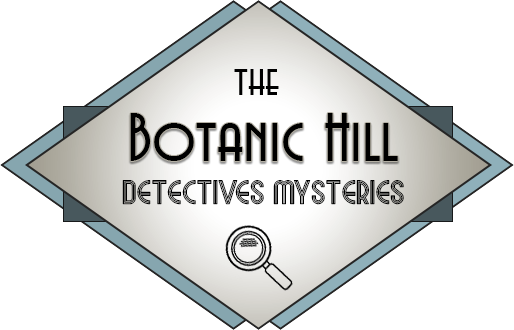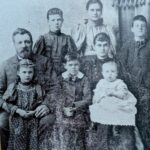Mentor: In Memoriam
Hello, Kids and All Readers,
Jacqueline Bouvier. Inveterate Reader–from childhood. Inquiring Photographer. Jackie Kennedy. Jackie O–a disrespectful nickname, I feel. Wife. Mother. First Lady. White House Restorer. America’s Queen. Influencer. Survivor. Writer. Editor. Grandmother.
These are a few of her names, titles, and roles. But to me, she was Mentor.
I met my mentor-to-be in my living room via television on January 20, 1961. I was eight years old. Her husband, the dashing JFK, had just been inaugurated as the thirty-fifth president of the United States. That day, at age 31, Mrs. Kennedy became the third youngest first lady in US history.
On the spot, youngster I was mesmerized by her elegance, sophistication, and beauty. But what truly tickled me was that an infant (JFK, Jr.) would be living in the White House for the first time since the turn of the century! Many in my family were abuzz over it. I remember secretly wanting to go to Washington, DC, to play with the two-month-old baby and his big sister, Caroline, age 3. In fact, I wanted to become their bigger sister! I decided that Mrs. Kennedy would be a wonderful “second” mom for me while I was visiting them. I did not realize yet how far away their house was from mine in California!
That day in 1961 began my lifelong admiration for Jacqueline Kennedy. As I grew, I watched her grow into her role as our stunning, intelligent, yet shy First Lady, who spoke four languages fluently, plus some German, Polish, and Greek. She was a proud Francophile and American who attended Vassar College and graduated from George Washington University with a degree in French literature. Her uppermost goal as First Lady was to raise her children as privately as possible for their well being. While living in a fish bowl called the White House! Can you imagine? But she managed it gracefully, working diligently to keep Caroline and John, Jr. away from the cameras whenever possible while spearheading the restoration of the president’s home, and Lafayette Park across the street. She petitioned her husband and Congress to send government funds to Egypt to help save the monuments at Abu Simbel, and brought Nobel laureates, the arts, and good taste to the White House. Years later, she saved New York’s Grand Central Station from the wrecking ball. Being very private herself, she declined nearly all requests for interviews for the rest of her life. If she were living today, she would not be sharing about herself on social media!
Shortly before my eleventh birthday in 1963, I tearfully watched a composed Mrs. Kennedy lead the president’s funeral procession, the world, and me through the dappled-gray windswept November streets of Washington with the horse-drawn caisson carrying the president’s flag-draped coffin, clacking over the avenue, to the beat of military drums. Then, she led us up the hill into Arlington National Cemetery to the cadence of bagpipes. I had never witnessed such courage, class, and fortitude as she nobly demonstrated during that epochal event. My mentor stood erect the entire awful, four-day weekend, which is seared into my memory forever. My heart still aches over it. After the funeral, Mrs. Kennedy returned to the White House, removed her black mourning veil, and individually thanked seventy-two heads of state for coming. Then, she quietly climbed the stairs to the living quarters and supervised a birthday party for her son, who turned three that same day his assassinated father was buried. Our First Lady was only thirty-four years old. She gave me goosebumps. But she taught me resilience, the need for continuity and dignity amidst chaos, and noblesse oblige.
Her bouffant hair styles and tasteful clothing choices continued to influence fashion worldwide long after she left the White House. In junior high, I took sewing classes for many reasons, one being to make those cute shift dresses she popularized. I had a closet full of them well into my teens and still favor that classic style. And in high school, I took French because Jackie Kennedy spoke it, befitting our mutual ancestry. I wore pearls and huge black sunglasses to imitate her style. In college, I majored in literature because she taught me the importance of its artistic, cultural, and historical scopes. After my daughter went off to college, I took horseback riding lessons because Jackie was an accomplished equestrienne. And she taught me to help preserve historic architecture and to write thank-you notes.
In my early thirties, about the same age Jackie Kennedy was when she became First Lady, I found myself a single mother. I looked to my mentor for support. She did not disappoint. I remembered two things she said when asked how she coped with raising her children without her husband present. First, she said she had resolved to continue “doing that which was right in front of her.” What was right in front of her? Her children. So, my attention became glued to my daughter. I quickly learned, as Jackie must have, that caring for children puts steel into your backbone, kindness into your heart, and priorities in the proper order. Second, Jackie Kennedy also famously said, “If you bungle raising your children, I don’t think whatever else you do well matters very much.” Right! My course was set. I would walk in my mentor’s footsteps and try not to bungle raising my daughter. (If I do say so myself, my precious girl is a remarkable person, wife, mother, friend, and caring, professional woman. I think Jackie would be proud of her and me!)
Regrettably, I never had the privilege of meeting Jackie Kennedy in person but have made it my mission since childhood to learn all I can about her. Sheila Lowe, a writer friend and professional handwriting analyst, recently shared with me what Jackie’s signature reveals: My mentor was “elegant and warm, but basically a loner who showed little of her true self.” Well, I certainly mirror the loner aspect and will continue to strive for her elegance and warmth. Still waters do run deep for us both. And frankly, I would like nothing better than to kick my social media presence to the curb.
I think of Jacqueline Kennedy often but especially in May–not only because of Mother’s Day, but because the anniversary of her death is May 19. She has been gone from us physically since 1994. Yet, I continue to seek her in spirit and gallop to catch up. If I had not come to know her, I would not be the person I am today. How fortunate for me that her and my time on Earth overlapped! I know that I chose my mentor well.
Mrs. Kennedy, you wore many hats–in all senses of the term. And you left us the pillbox chapeau, your kind, articulate daughter, and a legacy far greater than you know. Avec tous mes remerciements!
Dear kids and all readers, who is your mentor? What accounts for your choice? What have you learned from her or him?
To read more about the storied life of Jacqueline Bouvier Kennedy, please click HERE. You will be taken to a webpage of the John F. Kennedy Presidential Library and Museum at <https://www.jfklibrary.org/learn/about-jfk/life-of-jacqueline-b-kennedy>.
(All photos are from Wiki Commons and are in the public domain.)
- 1934. Jacqueline Lee Bouvier. Age 4. The Kennedy family album created by JFK.
- 1953. Wedding Day, Newport, Rhode Island. Photographer not credited. Possibly Arthur Burgess.
- 1961. The First Lady in the White House Diplomatic Reception Room. Photo by Robert Knudsen.
- 1962. Mrs. Kennedy in India talking with Indira Gandhi. Photographer from the Indian press.
- 1962. The First Lady riding with her children. A special photo commemorating the children’s birthdays. Photographer not listed.
- 1963. The President and First Lady, Caroline, John, Jr., and many pet dogs at the Kennedy Compound in Hyannis Port, MA. Photo by Cecil W. Stoughton, White House photographer.
- 1963. November 24. Mrs. Kennedy leading the family from the Capitol Rotunda where the body of the slain president was lying in state. Photo from the US Government.






























